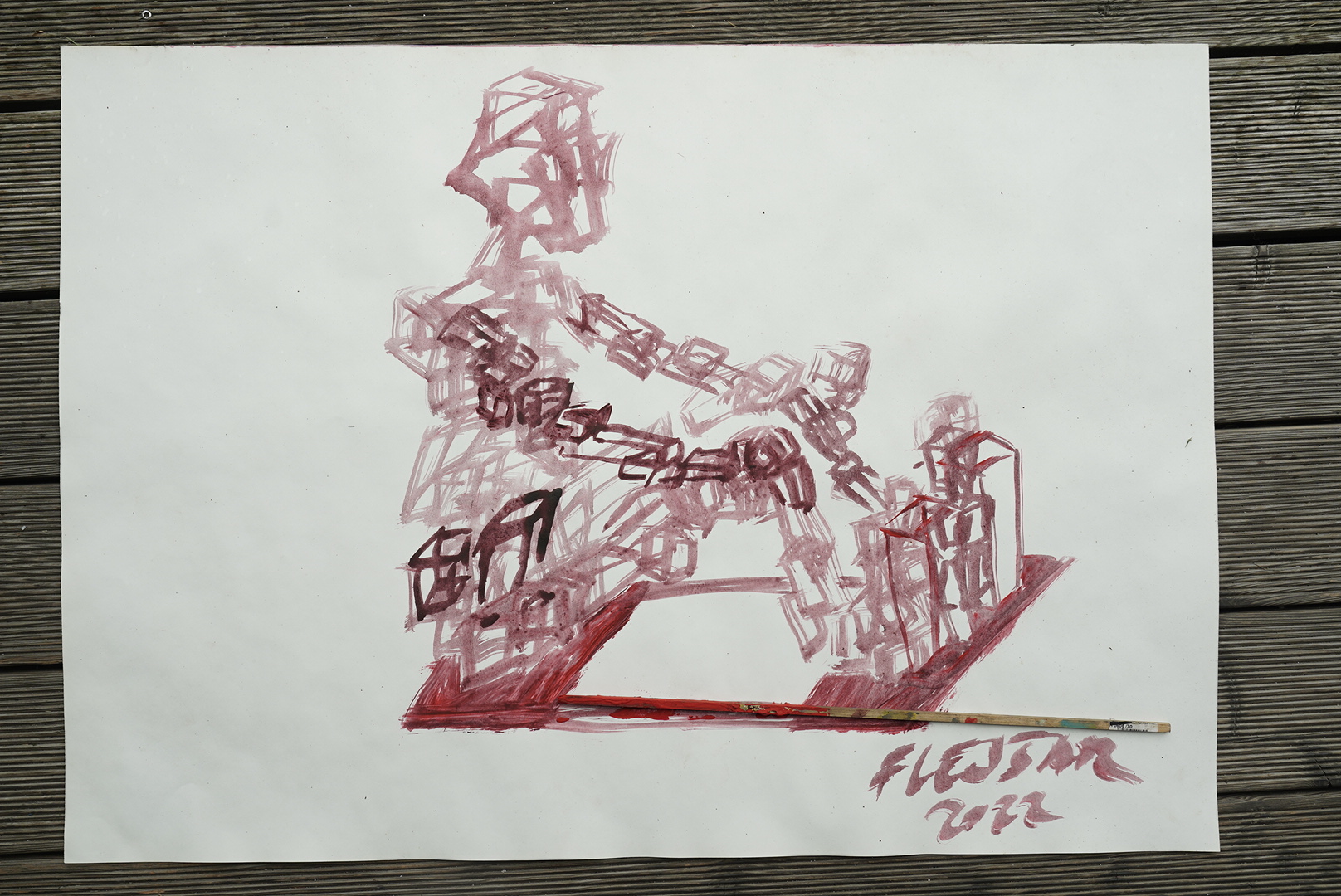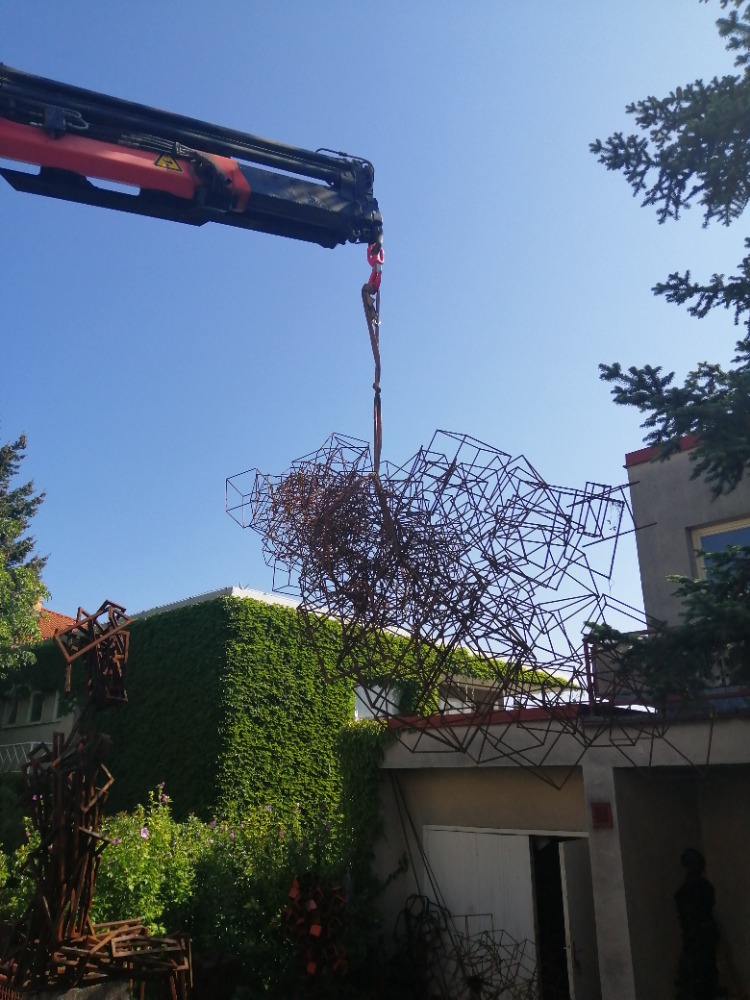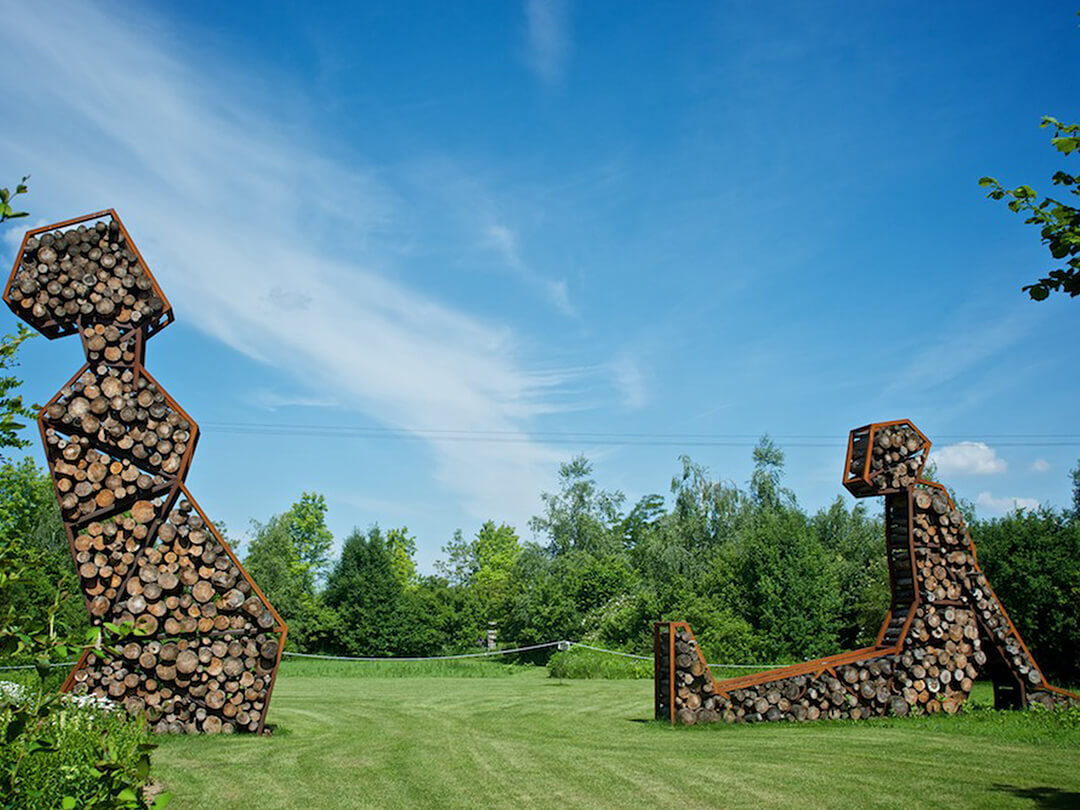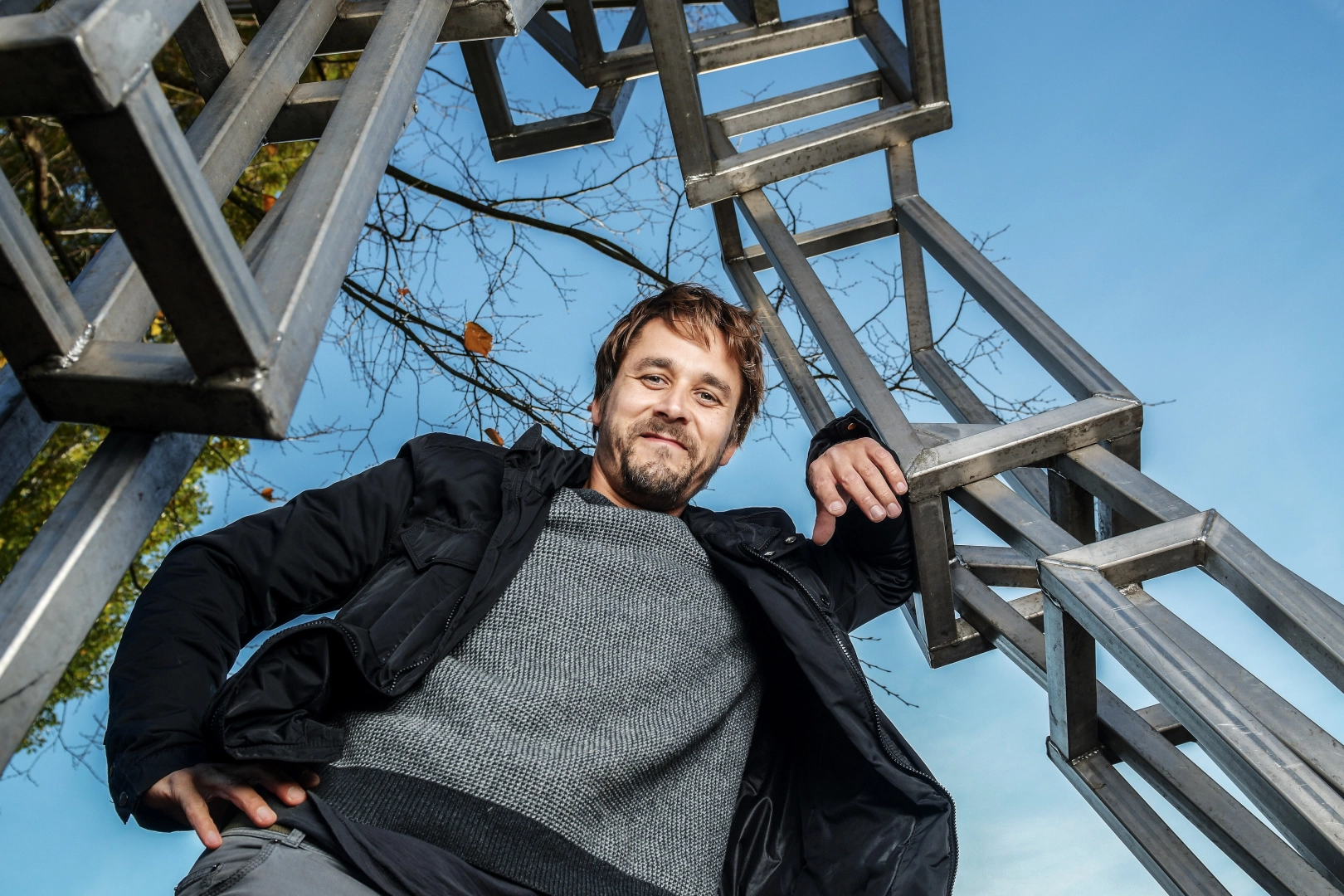Jakub Flejšar is the perfect person to write about in the Sport in Art magazine He does sports and art at the same time. People know him as a sculptor, a member of the national snowboard cross team, but also the coach of Eva Samková. In a few days, on the occasion of the 2022 World Rowing Championships, his larger-than-life sculpture inspired by this fascinating sport will sit on the rooftop of the Sport in Art Pop-Up gallery exhibiting contemporary art. So, we asked him a few questions.
You are a former coach of Eva Samková, queen of the white track, snowboard crosser, who's by the way the winner of the 2014 Winter Olympics in Sochi. It is said that you were the one who drew Eva's proverbial mustache before the race. Is that true? How did you enjoy your role as the coach?
Yes, it's true, that's actually why I used to join the snowboardcross team. Nobody knew how to draw much there, so I took it all on myself and with no fear I drew Eff's mustache – after all, I have a background in it. But regarding how I enjoyed being the coach – I enjoyed it in my time and I think I enjoyed it enough to move on again. But being Evka's coach was an honor for me, she's a person you want to be with even if you don't work together anymore.
Do you do any other sports besides snowboarding? Do you have any direct relationship to rowing?
I've always done what I enjoy and I enjoy pretty much any sport. Even though I might not be so great at some, I always enjoy them. Football, floorball, skiing, sk8boarding, skating, cycling, swimming. Many of my friends row, but it's too tough for me, I'd rather play hard than work hard.
Can you find anything art and sport have in common? Are these two at first glance different activities similar?
That's what's on my mind all the time ever since I quit my athlete and coach career. In their essence, they are very similar and interconnected. I wouldn't even call them activities, they're rather life attitudes, maybe even spiritual paths. Both of these paths prepare you for life. Each does so in a slightly different phase of your life, each in a different way – sport tangibly, art spiritually. In my opinion, one should begin with sport – it teaches discipline, losing, winning, coping with emotions, how to overcome oneself, to cope with pain (both physical and mental). It's an amazing tool to better yourself and boost your self-esteem. Art teaches you to search for something inside – to look at your soul unconsciously, it teaches you to respect things that you do not understand with your mind but feel inside. It can evoke any emotion you ask for and teaches you to work with yourself in an irrational way – which is something very important in the time when we put the main (and a little too much, in my opinion) emphasis on the mind.
As a sculptor you're mainly occupied with larger-than-life sculptures consisting of many fragments which then together form a figure. Are you planning anything similar for the ROW ROW ROW exhibition in Račice?
Yes, it will be a 4x4 m large figure of a rower composed of cubes and blocks. It looks like you've sketched it out with a pencil. It is not a material thing in the classically sculptural sense, but actually a sort of an allusion. This way the figure looks a little different dependind on where you stand. When you walk around it, you get lost in it. The statue literally absorbs your consciousness, you try to use your mind and find something to latch on to so that you can rationally explain it, but from many perspectives you find nothing but a bunch of lines. It is a perfect example of when the rational is useless and feelings must come into play.


I think it was during one of the Sculpture Line festivals when your Exercising Figure grew up in Prosek. Are there more sculptures inspired by sports?
Each figure is actually based on the human anatomy and certain proportions which I need to stick to. This way one could say that even my sitting and in fact all the other figures are based on sports. But if we want to look for sports sculptures, the squatting figure is self-explanatory. For Jizerská 50 I made a huge statue, about 12 meters in size (you can currently see it at the exhibition in Ostrava) – a cross-country skier who's just ran to the finish. It's called Decay – Decomposition, because at the finish line he begins to loosen up, even to break apart into pieces. But there's a lot more. I guess one could say that the sports theme clings to me even though I don't train anymore.
.jpg)
Wood and metal are what you use the most in your work. It's said that it's an expression of your relationship to nature and to the meaning of human existence in general. How should we understand that?
I think I can admit that my body is getting older and that it will die one day. The materials I use share this property. And when you're sensible enough to notice the gradual phases of disintegration and dying, you are fascinated by the transformation. Suddenly, you realize that perfection lies in the stage when a thing is new, shiny, firm, and fragrant, but also at the stage when it begins to rust, gray, get wet and rot. When it starts to decompose and bugs crawl in it, its charm changes. You realize that life is a transformation and nothing lasts forever. Wanting to leave something behind is pointless and unimportant. In fact, it's just an inability to admit that one day you cease to exist.

Is there a statue you're most proud of?
Probably not. For me, pride as a word is too connected to the mind and the nation and the tendency to protect and defend it. I have a feeling that pride gives rise to lots of evil. I'd probably rather use the word satisfaction. I see each sculpture as a description of myself and my then world view at the time it was created. I’m always most fascinated by my latest creations because it reflects my soul and the level of consciousness I’m currently at.
What's easier for you to imagine – life without art or life without sports?
I can imagine both, but I wouldn't want to live either of them. I think the task of the competent people should be to enable all children experience both. This is the type of education which can uplift the whole society. It's nice that there are people who have already understood that and are trying to bring these two worlds together. By the way, I'm about to leave the studio and I'm going to play floorball.
Have a nice day.
Jakub Flejšar (*1980) is an eminent representative of Czech modern sculpture art. He studied at the Academy of Arts, Architecture and Design in Prague under prof. Jiří Beránek at his studio Sculpture II. His work is characterized by play with space, its understanding and complementation – mostly with the human figure or its fragments, which gradually transforms to abstract forms. He mostly uses wood and metal. These materials express the author's attitude to impermanence and reflect the central theme of his work, which is the exploration of the meaning of human existence. On top of being a sculptor, he is also renowned in the snowboarding world as an ex-national team member and later coach of Olympic snowboard cross champion Eva Samková.

-min%20(1).jpg)




